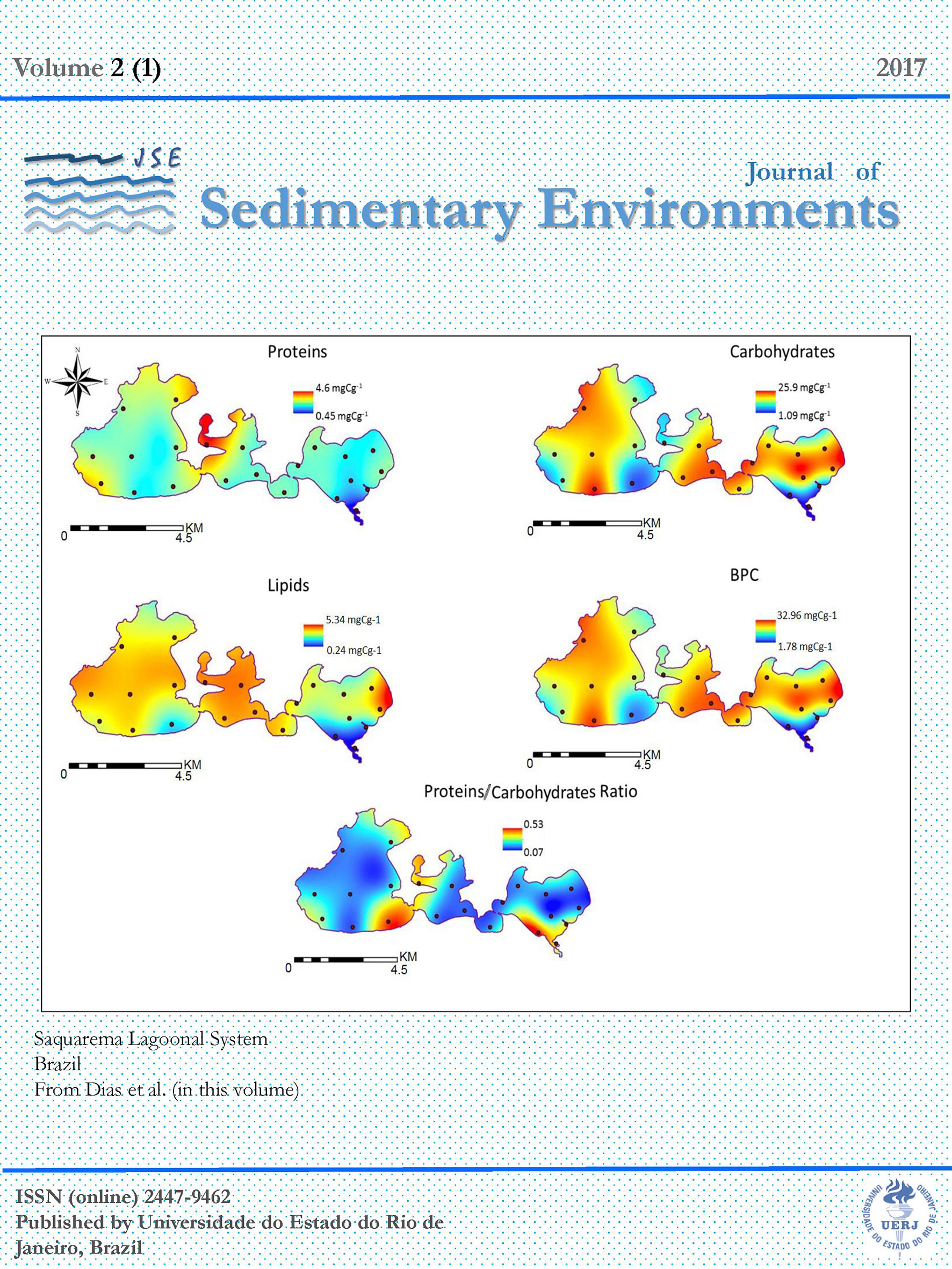ASSESSMENT OF THE TROPHIC STATE OF SAQUAREMA LAGOONAL SYSTEM, RIO DE JANEIRO (BRAZIL)
DOI:
https://doi.org/10.12957/jse.2017.28194Keywords:
Environmental impact. Organic matter compounds. Environmental quality.Abstract
This work intends to apply new ecological descriptors to a coastal marine area aiming to assess its environmental trophic status. This approach make possible to identify relevant variables associated with eutrophication process applicable and valid worldwide. The aim of this work is to study the organic matter (OM) quality and quantity, in terms of biopolymers, in Saquarema Lagoonal System (SLS) located in Rio de Janeiro State (Brazil). Sediment samples collected in SLS were analyzed in this study for granulometric and geochemical data such as total organic carbon (TOC), total sulfur (TS) and biopolimeric carbon (BPC) concentration, including proteins (PTN), carbohydrates (CHO) and lipids (LIP). These data were combined with additional environmental parameters measured in water of the four linked lagoons that compose the SLS. Data analyses allowed the identification of four distinct regions in SLS: an inner and impacted zone characterized by sediment particularly enriched in TOC, with lowest quality of OM most probably provided by contaminated effluents and rivers runoff; an outer-less impacted lagoonal area with relatively low TOC content and submitted to high hydrodynamic forces; an intermediate area characterized by transitional features between the two previously mentioned and a zone that are influenced mainly by salinity. The organic matter accumulation depends on the hydrodynamic conditions mostly governed by tidal currents. The quality of organic matter seems to be mainly influenced by the water renewal, rivers inputs and mangroves contributions as well as by the autochthonous lagoonal biological productivity. Results of this work indicate that the inner zone of SLS is being affected by eutrophication not necessarily caused by anthropic factors.
Published
Issue
Section
License

Journal of Sedimentary Environments (JSE) is licensed under a Creative Commons Attribution-Noncommercial-Share Alike 4.0 International License.

